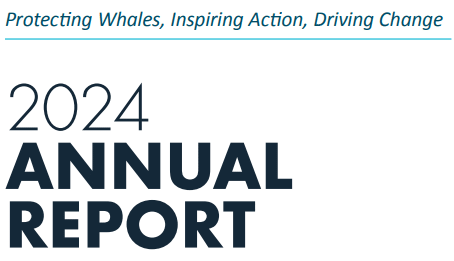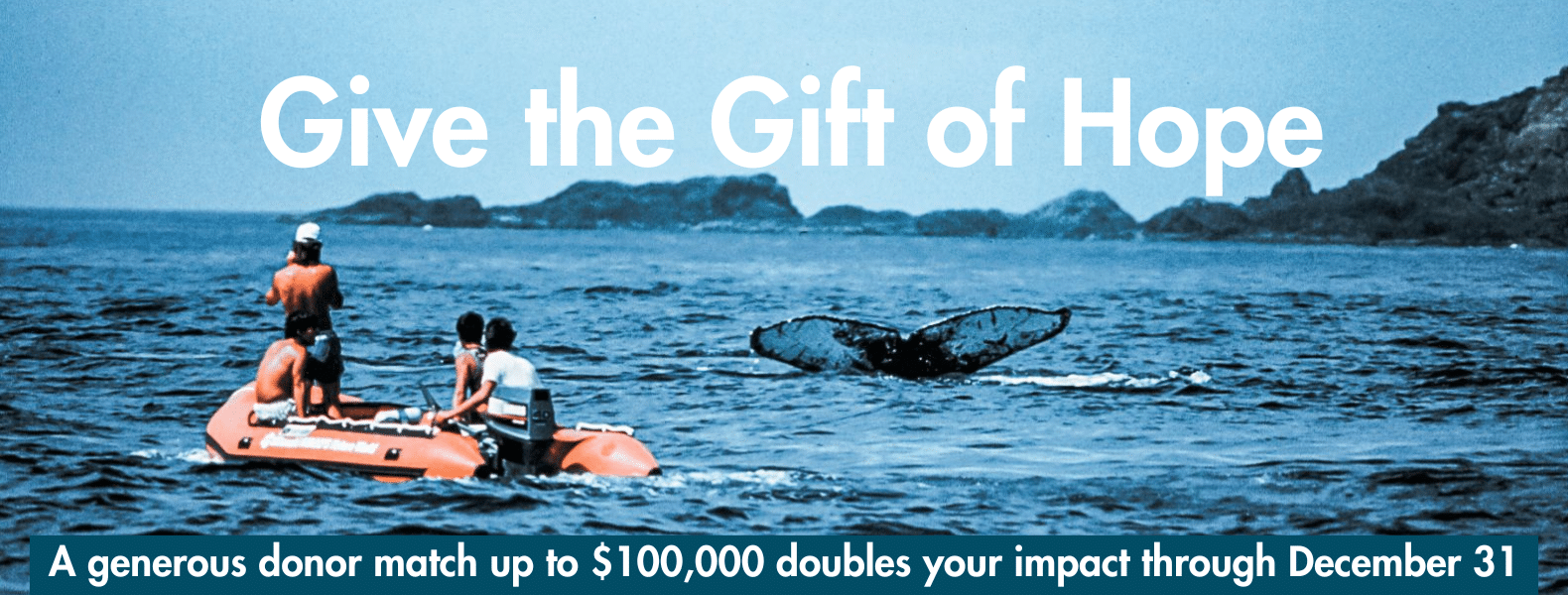Wondering what PWF’s Research, Education and Conservation programs accomplished last year? Find out here!
RESEARCH
With more than 100 peer-reviewed scientific and conservation-focused publications, reports and books published since 1980, PWF researchers work to identify and assess major threats to cetaceans around the world and develop science-based solutions to mitigate these issues. In 2021, we created a framework for strategic expansion of the Research program with a goal of producing meaningful and lasting impact.
This year alone, PWF has had EIGHT research studies published in scientific journals and wrote three reports that were presented to scientific working groups committed to marine mammal conservation across the globe!
Published Research Studies in 2021
- Getting butts off the beach: Policy alone is not effective at reducing cigarette filter litter on beaches in Maui, Hawai’i
- Feeding of humpback whales in low latitudes of the Southeast Pacific Ocean
- External scarring as an indicator of fisheries interactions with bottlenose (Tursiops truncatus) and pantropical spotted (Stenella attenuata) dolphins in Maui Nui, Hawai‘i
- The behavioural impacts of commercial swimming with whale tours on humpback whales (Megaptera novaeangliae) in Hervey Bay, Australia
- Tourism informing conservation: The distribution of four dolphin species varies with calf presence and increases their vulnerability to vessel traffic in the four-island region of Maui, Hawai‘i
- Mark−recapture estimates suggest declines in abundance of common bottlenose dolphin stocks in the main Hawaiian Islands
- Rapid weight loss in free ranging pygmy killer whales (Feresa attenuata) and the implications for anthropogenic disturbance of odontocetes
- The Impact of Vessels on Humpback Whale Behavior: The Benefit of Added Whale Watching Guidelines
Technical Reports presented to the
International Whaling Commission Scientific Committee
- Identifying conservation areas and habitat preferences of bottlenose dolphins in the Central Coast of Ecuador
- Humpback whale breeding stock G: updated population estimate based on photo-ID matches between breeding and feeding areas
- Summary of swim-with-whales tourism around the globe
Our Research program made great strides last year in several ongoing studies as well as implementing new projects designed to advance our knowledge on cetacean ecology and inform better species’ management.
Humpback whale monitoring in the Pacific Ocean

Monitoring humpback whales has been the foundation of PWF’s research since 1980. In 2021, through field surveys in Hawaiʻi, Australia and Ecuador, and public photo donations, we were able to collect 787 photos of individual humpback whales and, so far, have matched 179 with more to come! This allows us to track and learn about individuals and humpback populations as a whole. We also started collecting data for a new five-year project assessing the health of humpback whales in Hervey Bay and continued our ongoing project with the Marine Mammal Research Program of the University of Hawai‘i at Manoa and the Marine Mammal Lab of the University of Hawaii at Hilo to determine stress levels and overall individual health.
Image: Map showing connections of humpback whales photographed on research surveys in Hawai‘i with connections to other areas around the Pacific. Source: Happywhale.com

Biology and recovery status of false killer whales in Maui, Hawai‘i
It is estimated there are 150 to 200 individuals in the main Hawaiian Islands false killer whale population, which was listed as “endangered” in 2012 and is a high priority for our Research program. This past year, we completed processing underwater footage and photographs from all false killer whale sightings between 2013 and 2021 to identify the sex of individuals and document head and body scars that will help assess the degree of fisheries interactions experienced. In October, the Research team conducted a 10-day dedicated field study off Lānaʻi with collaborators from the Marine Mammal Research Program at University of Hawai‘i at Manoa and the Goldbogen Lab at Hopkins Marine Station Stanford University. We also launched our new false killer whale sightings hotline (808)-HELP-FKW, which allows the public to report sightings of false killer whales and led to five ‘Rapid Responses’ by PWF this year.

Hawai‘i. A prey item can be seen being held in the mouth by the leading adult.
Abundance, distribution and habitat use of common bottlenose dolphins in Ecuador
In the spring of 2021, PWF completed pilot surveys to assess the feasibility of studying common bottlenose dolphins in Ecuador. The team collected photo-identification images and biological samples for sex determination and genetic variability. Due to the success of this pilot study, we are proceeding with year-round surveys from this point forward to learn more about this population. Our aim is to produce the first abundance estimates using photo-ID techniques for bottlenose dolphins in Ecuador, which will aid in identifying critical habitat of bottlenose dolphins for management purposes.

Abundance, distribution and habitat use of dolphins in Hervey Bay, Australia

In 2021, we launched photo-identification catalogues for Australian humpback dolphins, IndoPacific bottlenose dolphins and common bottlenose dolphins in Hervey Bay. To date, images of dolphins have largely been collected opportunistically. However, PWF aims to expand the research focus in Hervey Bay to include more dedicated surveys documenting the dolphins inhabiting the bay. This will allow us to produce robust abundance estimates for the resident species and contribute to their management and conservation.
PWF will continue with long-term monitoring of cetaceans in support of our Global Impact Plan. As part of this plan, we are investing more resources into our research projects in Hawai‘i, East Australia and Ecuador with expansions planned in additional regions.. Learn about the exciting new research projects coming in 2022 and a more detailed accounting of our Research activities in 2021 in our 2021 Annual Research Report.
EDUCATION
In 2021 we introduced our first ever virtual field trip: Virtual Keiki Whalewatch. Our local teachers have been sharing our signature Keiki Whalewatch program with their students for years, but due to Covid-19, Maui County public schools have been forgoing field trips. It was and is extremely important to us to continue to bring this program — and the whales — to our local audience. Thanks in part to a grant from the Office of Economic Development, we were able to offer this program for free to Maui County Schools. The program was designed to simulate an in-person whale watching experience and provide participants with opportunities for individual interaction, and we are so pleased with the result! In addition to allowing us to continue sharing our program with Maui County students, this program allowed us to expand our reach to students throughout the Hawaiian Islands and US Mainland! We hope that this is the first of many virtual field trip offerings.
- 3909 students participated in the program, including:
- 2530 students from Maui County schools
- Students from five Hawaiian Islands (Maui, Molokai, Big Island, Oahu, Kauai)
- Students from 14 mainland US states

We also planned another new Keiki Whalewatch program that will see its first outing next month to ensure that our local keiki have as much opportunity as possible to view these magnificent animals up-close and in-person. For the first time, we are expanding this popular program to individual Maui County families with our Keiki Whalewatch Plus One! You and your keiki can join us on a customized 1.5 hour whale watch led by a PWF Education team member and receive take-home education materials to learn more about humpback whales and the marine environment.
Our Ocean Camp program took several forms in 2021: virtual, hybrid, and in-person. We were thrilled to be able to re-introduce our in-person Ocean Camp program, with some covid-safety modifications. Our generous donors and partnership with PacWhale Eco-Adventures allowed us to safely re-introduce and subsidize our in-person Ocean Camp program, with daily private snorkel trips! Virtual and in-person campers have really enjoyed learning, having fun, and making new friends at Ocean Camp!
160 total campers in 3 versions of Ocean Camp (hybrid, virtual, in-person), including:
- virtual campers in 5 different time zones
- from 3 Hawaiian Islands and 7+ mainland states
CONSERVATION
Conservation advocacy is vital to the protection of whales and other marine life. The following are some of PWF’s major conservation wins last year.

Launched our Adopt a Beach program with great success, in which volunteers have removed and recorded more than 25,000 pieces of debris to date!

Worked with NOAA and Maui County Council to pass additional protections for spinner dolphins in Hawaiʻi

Worked with Maui County Council to help pass further restrictions on reef-damaging sunscreens as well as providing testimony to ban disposable polystyrene (Styrofoam) bodyboards and plastic disposable foodware

Provided feedback to the Biden administration on executive order Tackling Climate Change Here and Abroad to ensure that cetaceans and ocean health are considering when addressing climate change solutions

Continued our Making Waves article series that dives into various threats to marine wildlife and what is/can be done to mitigate them








